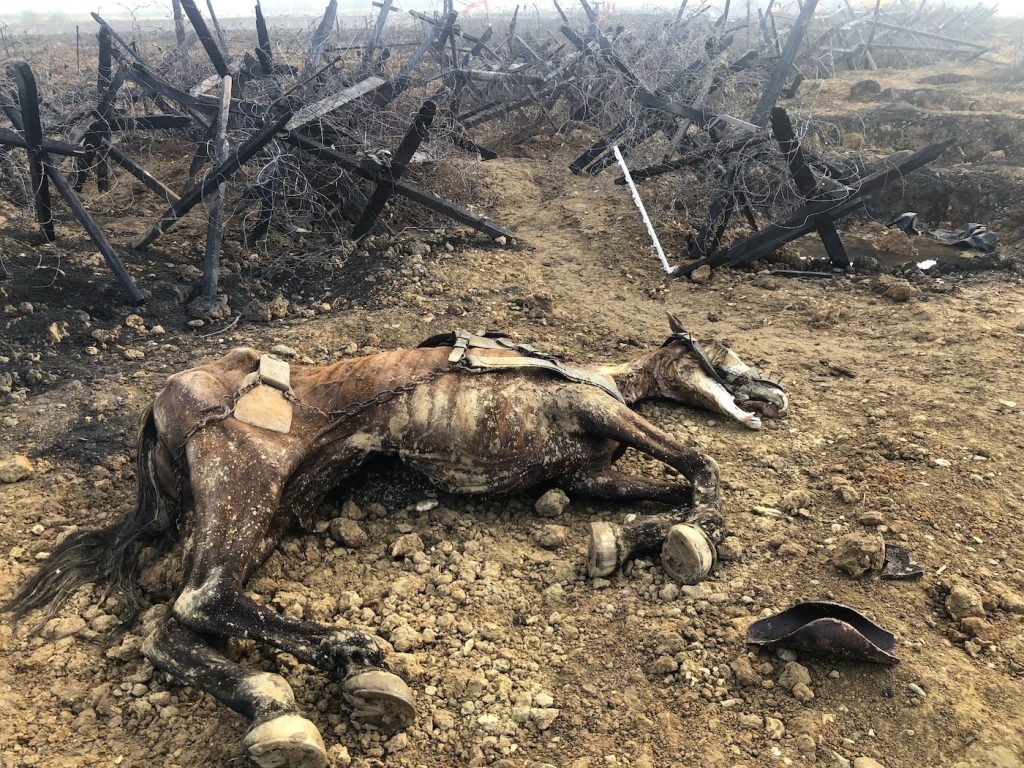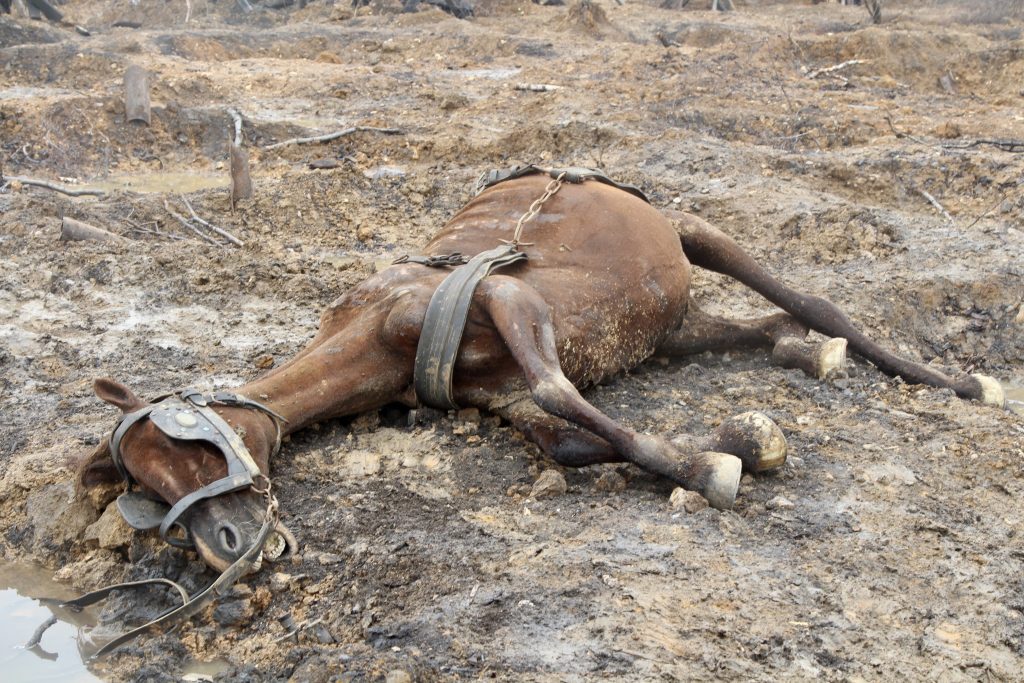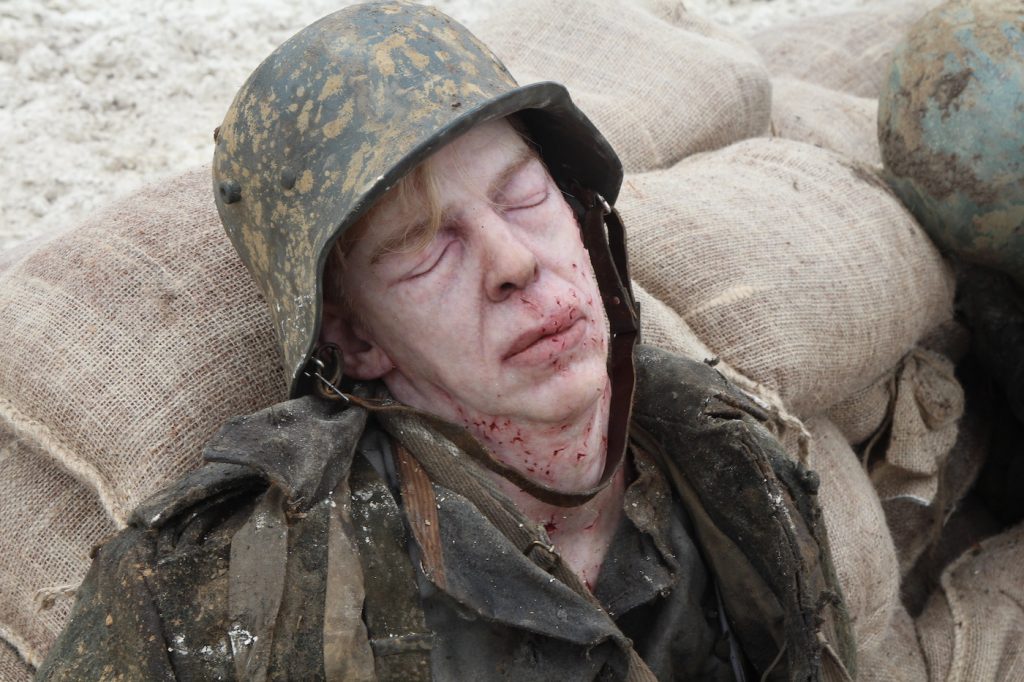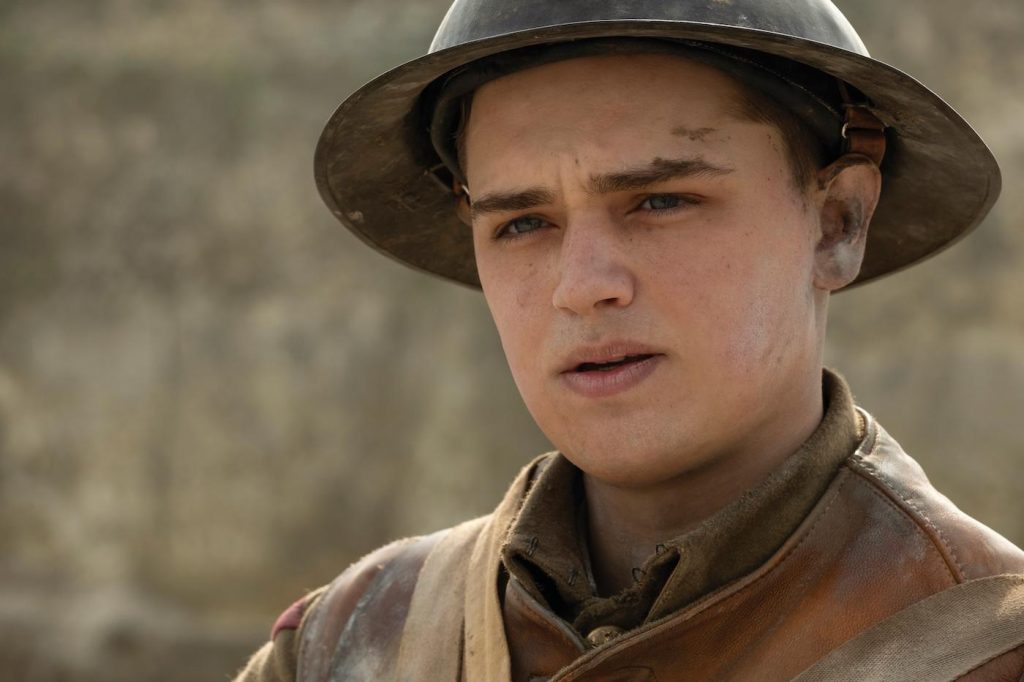How 1917’s Oscar-Nominated Prosthetics Designer Designed the Grisly, Gripping Drama
World War I epic 1917 conveys the carnage of combat with uncommon grit. Informed by writer-director Sam Mendes‘ heartfelt story and his gifted design team, the film, nominated for 10 Academy Awards including best picture, immerses viewers in a “No Man’s Land” littered with dead animals, rotting corpses and dying soldiers. Prosthetics designer Tristan Versluis, Oscar-nominated with makeup designer Naomi Domme, did most of the heavy lifting when it came to blood, guts, and gore.
Raised mainly in the UK, Versluis became enchanted with movies when he heard Nightmare on Elm Street playing in his brother’s room” I was too young to be allowed to watch it myself, which only made mew want to see it more!” In his teens, Versluis began practicing his craft on friends. “Creating a fantasy world and fooling people into believing something was real was great fun. The fact that I managed to make a job out of it is kind of a dream.” In recent years, Versluis supervised Leo DiCaprio’s bear mauling in The Revenant and served as right-hand prosthetics man to director Alex Garland on Annihilation and Ex Machina.
1917 marks his first collaboration with Mendes. “Sam had a very clear idea about how he saw things happening, which made him a pleasure to work with,” Versluis says. The movie, inspired by stories told to Mendes by his grandfather, follows British infantrymen Blake (Dean Charles Chapman) and Schofield (George McKay) as they clamber across a ravaged hellscape bearing a message that could save fellow soldiers from an impending slaughter. From his home in Spain, Versluis revealed tricks of the trade he used to simulate the ravages of war.
The dead horses.


The horses are the first signs of no man’s land encountered by Schofield and Blake, so we needed to get it right. We designed in 3D a two-sided horse. One side was bloated and the other emaciated. Making the emaciated horse, we molded a resin copy of a real horse skull and stripped back the head. Then we fabricated our copy of a skull in with fake dry skin and art-worked it all together in the right colors. We cast the horses’ bodies in a medium soft polyfoam and used silicone for their heads. They were then flocked to create the appearance of short hair with additional longer hair, hand-punched, and art-worked with patches of wear and tear to enhance the decomposing elements. Once we got our “horses” on set, they were wet down and weathered into the mud.
The German corpse, whom Blake Schofield accidentally touches.

We made a full prosthetic dummy by life-casting a model in the lying down position that Sam agreed on. From that mold, we created a new clay sculpture which allowed us to sculpt all the details and wounds. We also produced a silicone version. The inside of the back was fabricated to replicate soft muscle and flesh, which allowed the actor’s hand to squish inside [the organs] and complete this “gross” moment. The rats were added digitally.
The wounded German fighter pilot.
In this stunt, the actor was actually on fire when he got dragged out the plane so we designed a pair of special silicone legs, like trousers. They were sculpted over a cast of the actor’s legs with burnt skin detail. The silicone legs went over the top of a special gel that kept flames from hurting the actor during the takes, so we were able to add another level of protection for the actor against the fire burning him for real!
SPOILER ALERT
Corporal Blake’s bloody death scene.

This was a big scene for us. Not only is it one of the longest takes in the movie; it shows the slow death of a key character. We built a prosthetic chest for Dean to look like his own, but with a stab wound rigged with four tubes. We hid a remote-controlled blood rig in Dean’s costume, carefully watch each take and trigger the blood when needed. It took a lot of testing because we needed enough blood to last the length of the take and it had to flow fast enough to soak through his clothes and register [on camera]. Also, the pump needed to be muffled so the microphones couldn’t hear it while Blake delivers his final lines.
The walking wounded.
For the medical tents that you see at the end of the movie, we supplied and applied the wounds for all the extras playing soldiers. We prepared many different types of wounds in all sizes. We didn’t know how many wounded soldiers there would be until the day before shooting, so we made hundreds of [wound] copies. For each soldier, we mixed the appliances in different ways to create different looks. Then we layered specially designed dirt, mud, and debris over the prosthetic wounds to simulate the reality of returning from the battlefield. In bringing all of this to life on screen, we had to make every detail as real as possible.



